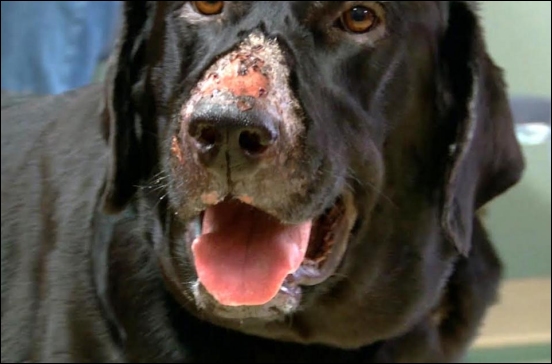Dog owners in Burnham-On-Sea and Highbridge have been issued with a safety warning by a local vet amid concern that the deadly dog disease Alabama Rot could be in the area.
Bridge Vets, based in Highbridge, has issued the warning following social media posts at the weekend indicating the disease could have affected a dog in the area.
The vet issued a statement saying: “We are aware of unconfirmed reports of Alabama Rot in the Highbridge area.”
“We have no official confirmation of this and seek to reassure concerned pet owners that this is still a rare disease.”
“However, we do recommend if you have walked your dog in muddy areas to wash their legs when you return home – for up to date information see here.”
The fatal condition first appeared in the UK six years ago and has claimed the lives of over 120 dogs since then across the country.
Although the cause of the disease is unknown and there is no vaccine, there are symptoms to look out for and advice is available if needed.

What is Alabama Rot?
Alabama rot is a disease that damages blood vessels in the skin and kidney. It causes blood to clot in the vessels which damages the lining and the delicate tissues of the kidneys.
This causes ulcers on a dog’s skin, but sadly it causes kidney failure in the kidneys, which can be fatal.
Alabama rot’s full, scientific name is cutaneous and renal glomerular vasculopathy (CRGV).
What causes Alabama Rot?
The actual cause of Alabama rot is not known. Some reports in the US suggest it is linked to the bacteria E.coli, but there is no evidence for this in cases seen in the UK.
It can affect any dog of any breed, age, or size. The majority of dogs who have been treated for Alabama rot in the UK have been walked in muddy and/or woodland areas.
More cases are reported between November and May than between June and October, which suggests the dogs are more likely to be affected in winter and spring.
What are the symptoms of Alabama Rot?
The first signs you may notice if your dog has contracted Alabama Rot are lesions or ulcers on the skin. These could appear as a patch of red skin, or as an open ulcer or sore. In many cases, the lesions will look out of the ordinary to vets.
These sores are most commonly found on a dog’s paws or lower legs, but they can also be found on a dog’s face, mouth or tongue, or on their lower body.
Signs of kidney failure include loss of appetite, tiredness and vomiting.
If your dog is showing signs of sore skin or ulcers on an area of their body that is close to the floor (and you know these have not been caused by an injury) it’s a good idea to contact your vet.
On average, dogs suffer from kidney failure about three days after lesions begin to show on the skin, however the time between sores appearing and kidney failure can be between one and 10 days.
The earlier this disease is caught and treated by a vet, the higher the chances of recovery.
How to stop dogs getting Alabama rot
As the source of Alabama rot is unknown, there is no way of making sure you stay away from the cause – but there are things you can do to prevent your dog from being affected.
Checking your dog’s body once a day for lumps and bumps is a good habit for all dog owners to get in to, and checking them regularly for the signs listed above will help lower the risk of your dog dying from Alabama rot.
Thankfully, the disease is not always fatal and the earlier it is caught, the greater your dog’s chances of survival.
Dogs cannot be vaccinated against Alabama rot. If you are in doubt, give your vet a call. It’s better to be safe than sorry.







